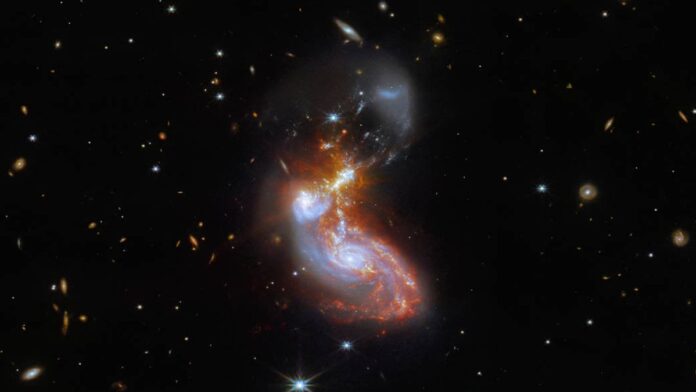The James Webb Space Telescope has captured a pair of galaxies distorting each other as they merge in a great galactic get-together.
The ongoing cosmic collision imaged by Webb is known as II ZW 96. It is roughly 500 million light-years from Earth and located in the constellation Delphinus, according to a Nov. 30 NASA statement (opens in new tab).
The image was created by Webb bringing to bear its cutting-edge NIRCam (Near-Infrared Camera) and MIRI (Mid-Infrared Instrument) payloads on II ZW 96 and details how the shape of both galaxies are being distorted by their respective gravitational attraction.
Related: NASA’s James Webb Space Telescope: The ultimate guide
NASA scientists note that the spiral arms of the lower galaxy have been twisted out of shape, while the bright cores of both galaxies are connected by the very bright tendrils of star-forming regions that made II ZW 96 such a tempting target for Webb.
The observation is a part of a wider effort by Webb to examine how galaxies evolve, focusing particular on nearby so-called Luminous Infrared Galaxies. These galaxies — of which II ZW 96 is an example — are particularly bright at infrared wavelengths, with luminosities more than 100 billion times that of the sun, according to NASA.
Merging galaxy system II ZW 96 is well known to astronomers and has been observed previously (opens in new tab) by the Hubble Space Telescope and ground-based telescopes.
Follow us on Twitter @Spacedotcom (opens in new tab) or on Facebook (opens in new tab).

